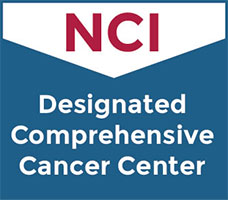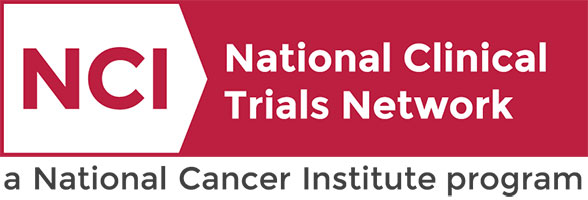Physician Search
 |
 |
| Consuelo Wilkins, MD, MSCI, Senior Vice President for Health Equity and Inclusive Excellence for Vanderbilt University Medical Center (VUMC) and Senior Associate Dean for Health Equity and Inclusive Excellence for Vanderbilt University School of Medicine, always knew she wanted to be a physician. "Health equity was built into everything I did, even if I didn’t know it or recognize it at the time," Wilkins said. "I have always learned and believed that people are the same — everyone deserves to be healthy, and everyone should have the best opportunities to take care of themselves and their families." Click below to learn more about health equity initiatives. https://momentum.vicc.org/2021/09/everyone-deserves-to-be-healthy/ |
Vanderbilt was the lead site for an NIH-funded, phase 2, multicenter influenza vaccine study in pediatric allogeneic hematopoietic stem cell transplant (HCT) recipients that may lead to a change in the current flu vaccine recommendations in this vulnerable population. Natasha Halasa, MD, MPH and colleagues recently published in the New England Journal of Medicine, that two doses of high-dose trivalent flu vaccine resulted in higher amounts of influenza-specific antibodies than two doses of standard dose quadrivalent vaccine. https://news.vumc.org/2023/03/02/high-dose-flu-vaccine-beneficial-for-pediatric-stem-cell-transplant-patients/ |
Venetoclax in Children With Relapsed Acute Myeloid Leukemia (AML)
Multiple Cancer Types
A study to evaluate if the randomized addition of venetoclax to a chemotherapy backbone
(fludarabine/cytarabine/gemtuzumab ozogamicin [GO]) improves survival of
children/adolescents/young adults with acute myeloid leukemia (AML) in 1st relapse who are
unable to receive additional anthracyclines, or in 2nd relapse.
(fludarabine/cytarabine/gemtuzumab ozogamicin [GO]) improves survival of
children/adolescents/young adults with acute myeloid leukemia (AML) in 1st relapse who are
unable to receive additional anthracyclines, or in 2nd relapse.
Pediatric Leukemia,
Pediatrics
III
Smith, Christine
NCT05183035
VICCPED2237
Selinexor and Venetoclax in Combination with Chemotherapy for the Treatment of Relapsed or Refractory Acute Myeloid Leukemia or Acute Leukemia of Ambiguous Lineage
Multiple Cancer Types
This phase I trial evaluates the side effects and best dose of selinexor and venetoclax in combination with chemotherapy in treating patients with acute myeloid leukemia or acute leukemia of ambiguous linage that has come back (relapsed) or does not respond to treatment. Venetoclax may stop the growth of cancer cells by blocking Bcl-2, a protein needed for cancer cell survival. Selinexor may stop the growth of cancer cells by blocking CRM1, which help the body's immune system to find and kill cancer cells. Chemotherapy drugs, such as fludarabine and cytarabine, work in different ways to stop the growth of cancer cells, either by killing the cells, by stopping them from dividing, or by stopping them from spreading. Colony-stimulating factors, such as granulocyte colony-stimulating factor, may increase the production of blood cells and may help the immune system recover from the side effects of chemotherapy. Giving venetoclax and selinexor with chemotherapy may help control the disease in patients with acute myeloid leukemia or acute leukemia of ambiguous lineage.
Leukemia,
Pediatric Leukemia,
Pediatrics,
Phase I
I
Smith, Brianna
NCT04898894
VICCPEDP2235
Pharmacokinetics, Safety, and Efficacy of ASTX727 in Combination With Venetoclax in Acute Myeloid Leukemia (AML)
Multiple Cancer Types
The Phase 1 portion of this study is a single-arm, open-label, multicenter, non-randomized
interventional study to evaluate the pharmacokinetic (PK) interaction, safety, and efficacy
of ASTX727 when given in combination with venetoclax for the treatment of newly diagnosed
acute myeloid leukemia (AML) in adults who are age 75 years or older, or who have
comorbidities that preclude use of intensive induction chemotherapy. The primary purpose of
the study is to rule out drug-drug interactions between ASTX727 and venetoclax combination
therapy by evaluating area under the curve (AUC) and maximum plasma concentration (Cmax)
exposure. The Phase 2 portion of the study is to assess the efficacy of ASTX727 and
venetoclax when given in combination and to evaluate potential PK interactions. Phase 2 will
follow the same overall study design as Phase 1 and has two parts, Part A and Part B.
interventional study to evaluate the pharmacokinetic (PK) interaction, safety, and efficacy
of ASTX727 when given in combination with venetoclax for the treatment of newly diagnosed
acute myeloid leukemia (AML) in adults who are age 75 years or older, or who have
comorbidities that preclude use of intensive induction chemotherapy. The primary purpose of
the study is to rule out drug-drug interactions between ASTX727 and venetoclax combination
therapy by evaluating area under the curve (AUC) and maximum plasma concentration (Cmax)
exposure. The Phase 2 portion of the study is to assess the efficacy of ASTX727 and
venetoclax when given in combination and to evaluate potential PK interactions. Phase 2 will
follow the same overall study design as Phase 1 and has two parts, Part A and Part B.
Leukemia,
Phase I
I/II
Savona, Michael
NCT04657081
VICCHEMP20102
Decitabine and Cedazuridine in Combination with Venetoclax for the Treatment of Patients who have Relapsed Acute Myeloid Leukemia after Donor Stem Cell Transplant
Leukemia
Leukemia
This phase II trial tests how well decitabine and cedazuridine (DEC-C) works in combination with venetoclax in treating acute myeloid leukemia (AML) in patients whose AML has come back after a period of improvement (relapse) after a donor stem cell transplant. Cedazuridine is in a class of medications called cytidine deaminase inhibitors. It prevents the breakdown of decitabine, making it more available in the body so that decitabine will have a greater effect. Decitabine is in a class of medications called hypomethylation agents. It works by helping the bone marrow produce normal blood cells and by killing abnormal cells in the bone marrow. Venetoclax is in a class of medications called B-cell lymphoma-2 (BCL-2) inhibitors. It may stop the growth of cancer cells by blocking Bcl-2, a protein needed for cancer cell survival. Giving DEC-C in combination with venetoclax may kill more cancer cells in patients with relapsed AML.
Leukemia
II
Mohan, Sanjay
NCT05799079
VICCHEM2163




